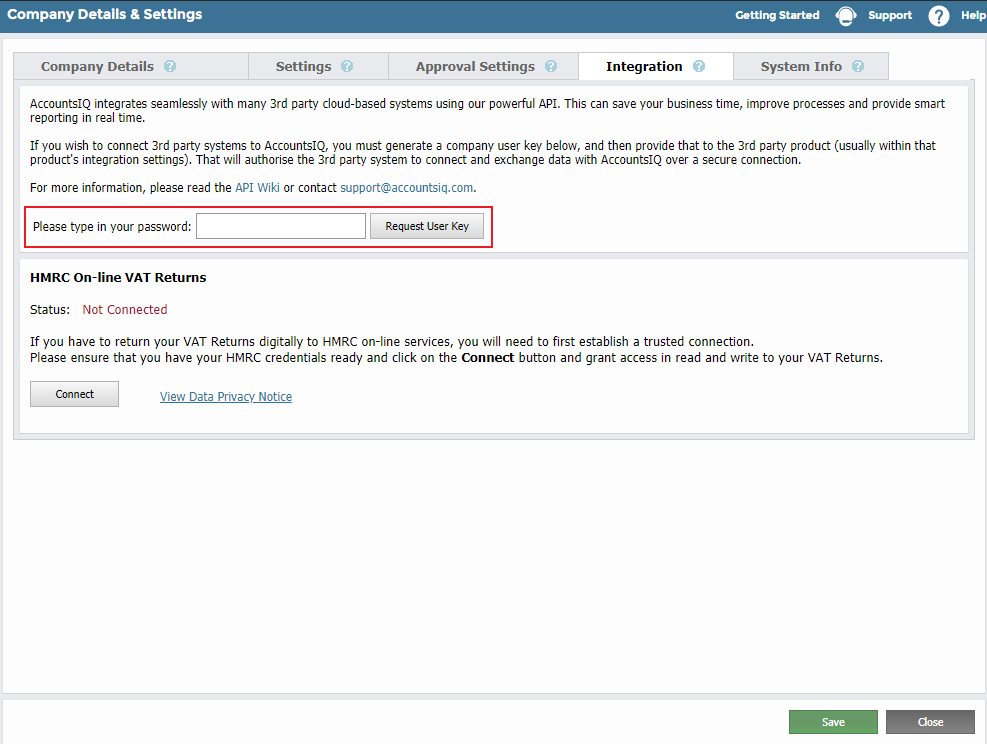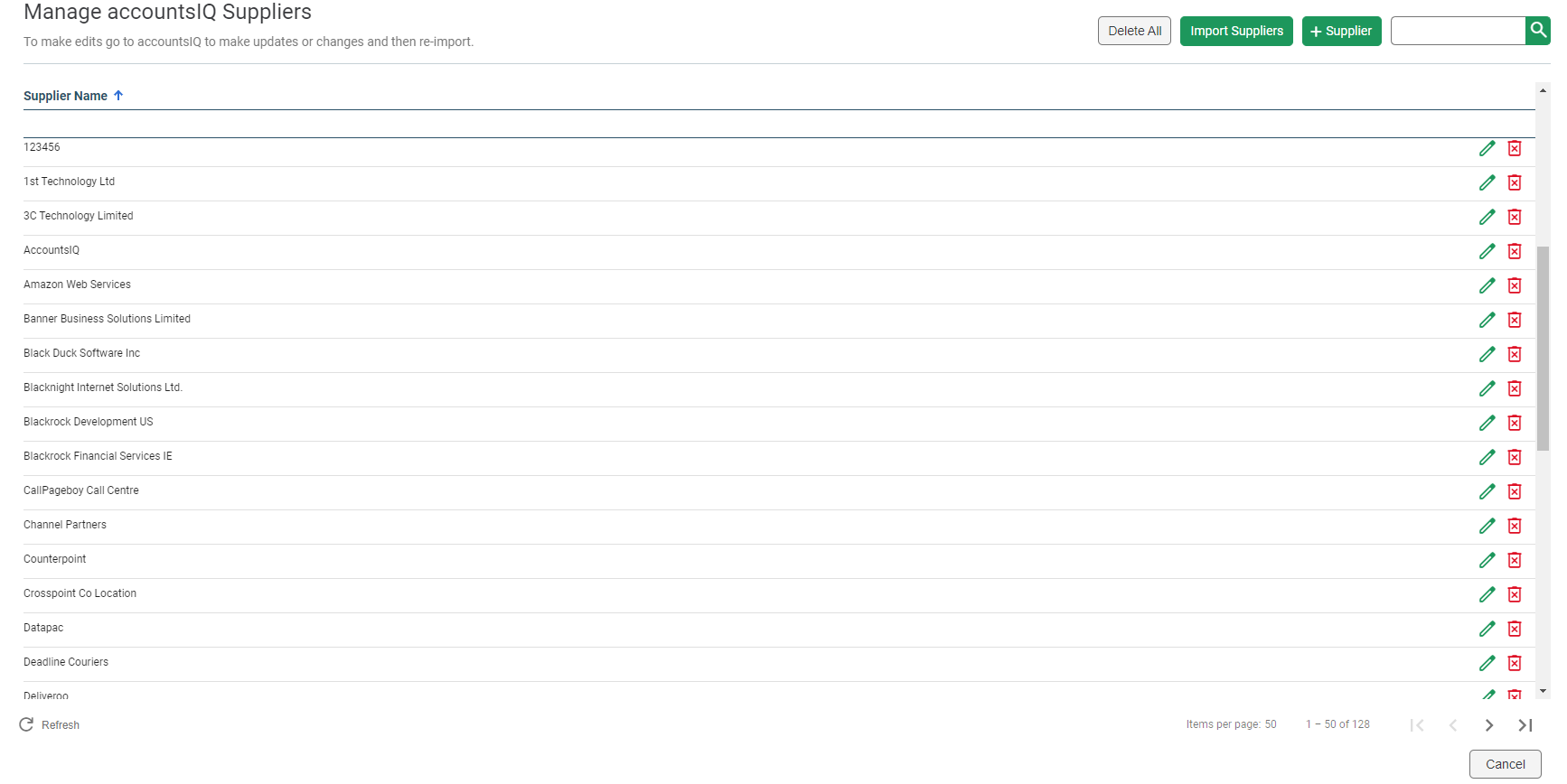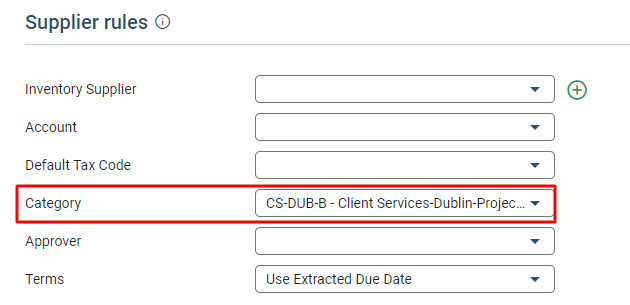AccountsIQ Integration Setup Guide
Connecting to accountsIQ
Setting up and connecting Lightyear to accountsIQ is a quick and easy process.
From the left hand ribbon, head over to Settings > Accounting Software > Select accountsIQ > Connect.
A popup will display asking for a User Key and Entity ID .
To find your User Key, in accountsIQ, along the top banner go to Set Up > Company Details & Settings. 
This will open another window. Along the banner of this window, click Integration. In the Please type in your password: field, enter your password for your accountsIQ account, and click Request User Key. This will display the User Key that needs to be entered in Lightyear. Copy this and paste it into the User Key field in Lightyear.
The Entity ID is the ID you are presented with when you first log into accountsIQ. Copy this and paste it into the Entity ID field in Lightyear.
Once User Key and Entity ID are populated in Lightyear, click Save and Import.
Software Settings
Continuing with the set up, there are some unique software settings for accountsIQ.
These include:
-
Do you use categories? For those using categories in accountsIQ, you can select Yes for this option to allow us to code within Lightyear and export the details to AccountsIQ. Save time by coding it in Lightyear, and we'll remember the next time we extract the line item what your preferred category settings are too! If you do not require categories, you can simply select No.

Categories in Lightyear are the same as BI Codes in accountsIQ
-
Automatically Apply categories on line item level? By default, Lightyear will automatically apply categories at line item level based on various rules. You can choose for this feature to be disabled. More about this can be found below.
-
Automatically apply Chart of Accounts on line item level? By default, Lightyear will automatically apply Accounts at a line item level based on various rules. You can choose for this feature to be disabled by selecting No.
-
Send Attachments to AccountsIQ? Selecting this option will send any attachments from Lightyear, along with the original invoice that was uploaded to Lightyear. In accountsIQ you will be able to view any attachments by clicking the
icon.
- Group Line Item Data? Turning this on will allow you to export Grouped Account data, rather than line item data. For the full article on this, click here.
-
Integration Type If you want to send invoices into the Batch Invoices area of AccountsIQ, select Batch. Otherwise, select Item to send into the Item Invoices area. Speak to our team to see what the best option for your business may be!
-
Default Service Item: This will only be available if you have selected Item as the Integration Type. All invoices exported from Lightyear will be allocated to this service item, which corresponds to the Active Items under the Services/Non Stock Items - Active Items within accountsIQ.
 You will not be able to export without this!
You will not be able to export without this!
-
AccountsIQ Server Location When you are logged into AccountsIQ, you will be on a specific server - this server can be found in the URL of your AccountsIQ account.
In this example, we are on the UK server, so in the dropdown we would select UK.
accountsIQ Suppliers
accountsIQ Supplier are what Lightyear uses to connect a Supplier in Lightyear to a Supplier in accountsIQ. Any existing Suppliers in accountsIQ will appear here after connection, and you can create more using the + Supplier button at the top.
When you connect to accountsIQ, by default your list of existing accountsIQ suppliers are synced to Lightyear.
Head over to Settings > Accountancy > accountsIQ Suppliers > Import Suppliers.
Chart of Accounts
Active Accounts are all synced with accountsIQ when you connect your accountsIQ & Lightyear accounts and displayed within the Account section of Accountancy Settings. The Accounts are all listed in a long list.
If you make any subsequent updates to your Accounts within accountsIQ, you simply need to go to Accountancy Settings > Chart of Accounts in Lightyear, click import from accountsIQ, this will refresh your list.
If you wish to reduce the number of Accounts that Lightyear presents to you in its drop down lists, then deselect the tick boxes for those particular Accounts that you do not want to have displayed.
Tax Rates
When you initially connect to accountsIQ, Lightyear will automatically import all your accountsIQ defined tax rates.
Once your tax rates are uploaded into Lightyear you need to choose two accountsIQ tax rates to act as the defaults for taxable and non-taxable items.
Lightyear will use these defaults to send the relevant tax code to accountsIQ if a line is taxed/tax free, this is unless you choose to manually assign a different non-default tax rate to the item from within Lightyear's Bill Review section.
To choose your 2 defaults go to the Settings > Accountancy > Tax Rates
The below image shows what a typical setup looks like. We have selected the 2 standard rates (Standard Rate and No Tax Element):
More about Automatically Applying Categories
By switching this on, Lightyear will remember the Categories you have previously selected, and automatically apply these the next time the invoice is received in the Approvals tab.
This can be set as a supplier default, meaning one Category will be selected for all lines of an invoice, or it can be set on a line-by-line basis, based on the product code.
To set as a supplier default, go to your Supplier, and under the Category field, select the required option from the dropdown:
To set on a line-by-line basis, go to your Supplier > Products. Click the green pencil on the item you want to edit, and under the Category field, select the required option from the dropdown:
Migrating Software?
Once you select accountsIQ as your software, you won't be able to change it. If you are thinking about changing accountancy software, please reach out to our Support team for guidance on how to do so.
Check out our
to stay up to date
Related Articles
iFinance Integration Setup Guide
Connecting to iFinance Setting up and connecting Lightyear to iFinance is a quick and easy process. From the left hand ribbon, head over to Settings > Accounting Software > Select accountsIQ > Connect. A popup will display asking for a User Key and ...Fuelsoft Integration Setup Guide
Lightyear allows you to export your bills in a pre-set CSV format, which can then be uploaded directly to Fuelsoft. To get started, head to the Accounting Software section of Lightyear and select Fuelsoft from the drop down. Once done, you'll need to ...Xero Integration Setup Guide
Connecting to Xero Because Xero and Lightyear are both cloud-based, set-up and connectivity between the two systems is seamless. Here's how. From the Navigation Pane, head over to Settings > Accounting Software > select Xero from the dropdown menu > ...Netsuite Integration Setup Guide
Make sure you're logged into NetSuite as an admin There's quite a few steps required to get your NetSuite integration up and running, but this is only a one time set up and will not need to be completed again unless you wish to connect another ...Sage Intacct Integration Setup Guide
Connecting to Sage Intacct As Sage Intacct and Lightyear are both cloud-based, set up and connectivity between the systems is seamless. Here's how! Prerequisites Subscribe to Web Services You will need to add your Company's Sender ID to the Sage ...